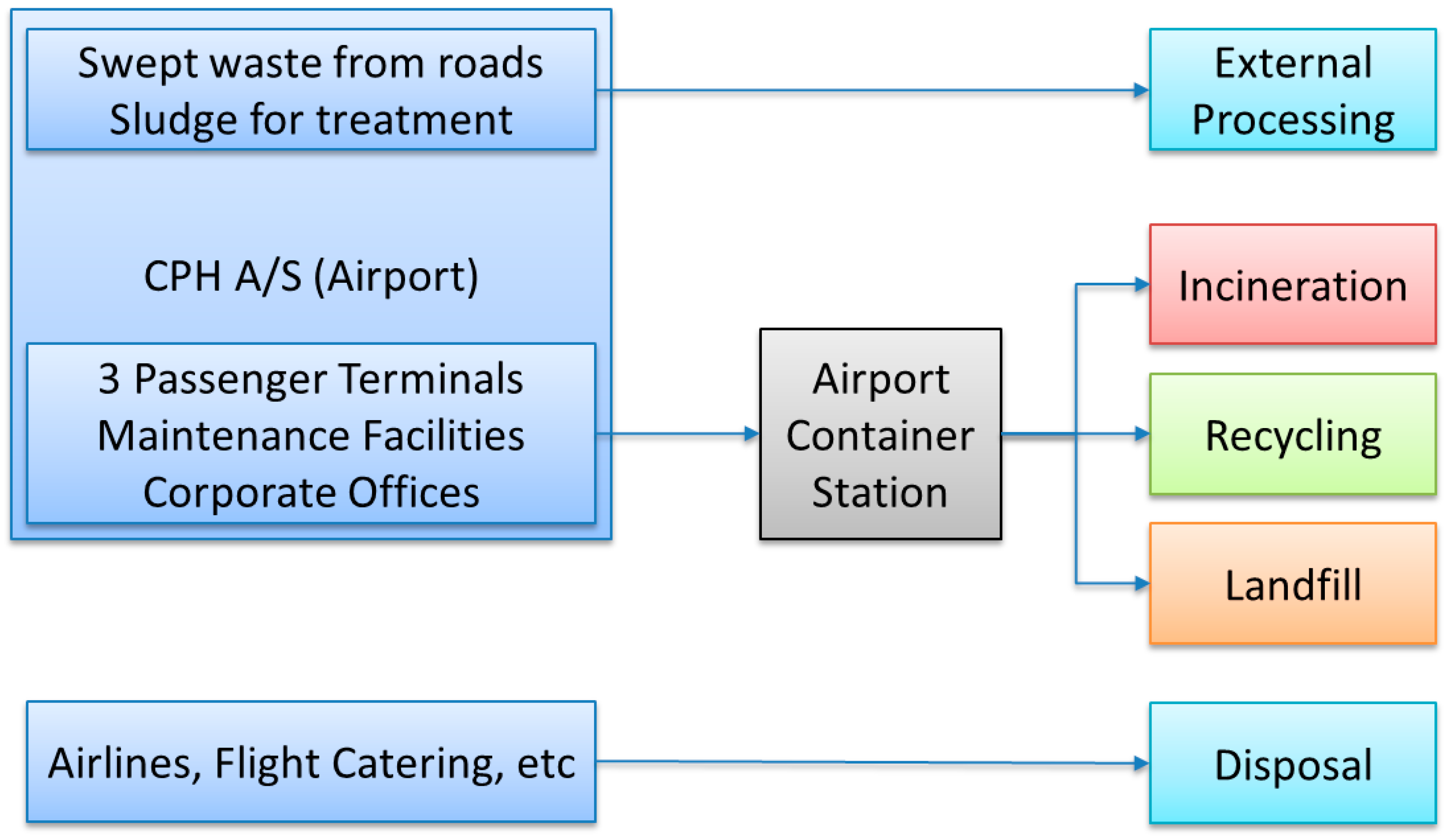An Assessment of Airport Sustainability, Part 1—Waste Management at Copenhagen Airport
Abstract
:1. Introduction
- What are the distinct types and quantities of waste generated at Copenhagen and have these changed over time?
- What impact has the growth in passengers and aircraft movements had on the volumes of waste generated at Copenhagen Airport?
- What type of waste management system has been implemented at Copenhagen Airport?
- What systems are used to mitigate the impact of waste on the environment at Copenhagen Airport?
2. Literature Review
2.1. Waste Management Hierarchy
2.2. Sources of Airport Waste
2.3. Solid and Hazardous Waste Produced at Airports
- Municipal Solid Waste (MSW) compromises everyday items that are used and then subsequently discarded. These include items such as product packaging, furniture, clothing, bottles, food scraps and newspapers [3,9]. The final disposal of MSW by land-filling or open-dumping represents an environmental burden [29].
- Construction and Demolition waste (C&D) is any non-hazardous solid waste produced from land clearing, excavation and/or the construction, demolition, renovation or repair of structures, roads and utilities at an airport. C&D waste commonly compromises concrete, wood, metals, drywall, carpet, plastic, pipes, land clearing debris, cardboard and salvaged building components. In some cases, C&D waste may be subject to specific requirements, such as, tar impregnated roofing materials [3,9]. Solid waste is generated at airports during the construction of facilities (demolition and construction debris), operations (passengers in the airport terminals and on aircraft) and during maintenance activities (landscape debris, light bulbs, and so forth) [30].
- Green waste is categorized as MSW and may also referred to as “yard waste”. The green waste generated at airports compromises tree, shrub and grass clippings, leaves, weeds, small branches, seeds, pods and similar debris generated from the airport’s landscape maintenance activities.
- Food remediation waste is food that has not been consumed or is the waste generated and discarded during food preparation activities from in-flight kitchens.
- Deplaned aircraft waste is waste originating from aircraft flights. These waste materials include bottles and cans, newspaper and mixed paper, plastic cups and service ware, food waste, food soiled paper, as well as paper towels [3,9,23]. The volume and characteristics of waste generated on an aircraft are dependent on the length of the flight [31].
- Lavatory waste is a form of special waste and is generated when the lavatory tanks of the aircraft are emptied and pumped into a lavatory service vehicle. Once the aircraft’s lavatory tanks are emptied, the lavatory tanks are refilled with a mixture of water and a disinfecting concentrate. Importantly, lavatory waste can be comprised of chemicals and potential enteric pathogens, and these can present significant risks to the environment and human health if they are not handled in an appropriate manner [24] (p. 2).
- Spill clean-up and remediation wastes are another form of special waste. These materials are generated during the clean-up of spills and/or the remediation of contamination from various types of on-airport sites, for instance, storage tanks, oil and gas production, vehicular leaks and spills from maintenance activities, and so forth [3,24].
2.4. Airport Waste Management Systems
- Incineration: with this option, the waste fraction is incinerated. Incineration is defined as “a controlled combustion process for reducing solid, liquid, or gaseous combustible wastes primarily to carbon dioxide, water vapour, other gases and a relatively small, non-combustible residue, that can be further processed or land-filled in an environmentally acceptable manner” [42] (p. 3). An option is for the waste to be incinerated in a Combined Heat Power plant (CHP) that produces heat and/or electricity [43,44]; and
- Landfill: waste that is not suitable for recycling or incineration will be deposited in a landfill. In many cases, it may be necessary to pre-treat the rubbish to remove hazardous substances [40] or to reduce the volume of waste to be sent to the landfill.
2.5. Airport Centralised or De-Centralised Waste Management Systems
- Centralised coordination of waste haulage and container maintenance results in less truck traffic on the airfield, less fuel usage and a reduced risk of airfield collisions;
- Greater control by the airport authority over the type, placement and maintenance of compactors and dumpsters saves space whilst also eliminating the requirement for each airline to have its own containers;
- Airlines that only produce small volumes of waste can recycle it with fewer overhead costs; and by directly billing tenants and airlines for waste management services, the airport authority can develop incentives to promote waste recycling [19] (p. 3).
- The system may be less efficient because more dumpsters than necessary may be used to handle the quantity of waste that is being disposed;
- It introduces the possibility of improper dumping in another airline’s dumpster;
- Quantifying and tracking the amount of waste generated and recycled at an airport becomes more complicated
- Achieving the scale necessary to make recycling more economical for any single tenant is more difficult [19] (p. 5).
2.6. Waste Management Regulatory Frameworks
3. Research Method
4. Results and Discussion
4.1. Copenhagen Airport: A Brief Overview
4.2. Copenhagen Airports A/S Environmental and Regulatory Framework
- Quantity
- Waste fraction (comprised of 31 household waste codes and 35 industrial waste codes) 72, as well as a List of Waste Code (LoW) Code 73.
- Treatment 6 Danish treatment codes, 13 recovery codes (R codes) and 15 disposal codes (D codes). For those actors not treating waste themselves then the expected treatment to which waste is subjected is required to be stated in the report.
- Final treatment. The actors must state whether they subject the waste to a final treatment. Final treatment means that waste is taken out of the waste flow. This may happen, among others, through incineration, landfilling, recycling or export of the waste [67] (p. 51).
- Recycling: ensure a more efficient and effective collection of cardboard, paper and plastic bottles;
- Visibility: reducing sorting errors with a more transparent waste system;
- Dynamics: continually adapting waste handling procedures to the changes made at the airport [62] (p. 52).
4.3. Sources and Types of Waste Produced at Copenhagen Airport
4.4. Total Annual Volumes of Waste Produced at Copenhagen Airport
4.5. Incinerated Waste at Copenhagen Airport
4.6. Recycled Waste at Copenhagen Airport
4.7. Special Treatment and Landfill Waste at Copenhagen Airport
4.8. Recommendations
4.9. Limitation of the Study
4.10. Future Work
5. Conclusions
Acknowledgments
Author Contributions
Conflicts of Interest
References
- Ferrulli, P. Green airport design evaluation (GrADE)—Methods and tools improving infrastructure planning. Transp. Res. Procedia 2016, 14, 3781–3790. [Google Scholar] [CrossRef]
- Allett, T. Alternative Power, Airports International, 12 September. Available online: http://www.airportsinternational.com/2011/09/alternative-power/6380 (accessed on 9 September 2017).
- Mehta, P. Aviation waste management: An insight. Int. J. Environ. Sci. 2015, 5, 179–186. [Google Scholar]
- Oto, N.; Cobanoglu, N.; Geray, C. Education for sustainable airports. Procedia-Soc. Behav. Sci. 2012, 47, 1164–1173. [Google Scholar] [CrossRef]
- Vanker, S.; Enneveer, M.; Mäsak, M. Implementation of environmentally friendly measures at Tallinn Airport. Aviation 2013, 17, 14–21. [Google Scholar] [CrossRef]
- Giustozzi, F.; Toraldo, E.; Crispino, M. Recycled airport pavements for achieving environmental sustainability: An Italian case study. Resour. Conserv. Recycl. 2012, 68, 67–75. [Google Scholar] [CrossRef]
- Dimitriou, D.J.; Voskaki, A.J. Regional airports’ environmental management: Key messages from the evaluation of ten European airports. In Regional Airports; Postorino, M.N., Ed.; WIT Press: Southampton, UK, 2011; pp. 73–86. [Google Scholar]
- Edwards, B. The Modern Airport Terminal: New Approaches to Airport Architecture, 2nd ed.; Spon Press: Abingdon, UK, 2005. [Google Scholar]
- Parameshwar, H.K. Solid waste management in airports: A case study of Bangalore International Airport. In Proceedings of the International Conference on Green Technology and Environmental Conservation (GTEC-2011), Chennai, India, 15–17 December 2011; pp. 152–158. [Google Scholar]
- Pitt, M.; Smith, A. Waste management efficiency at UK airports. J. Air Transp. Manag. 2003, 9, 103–111. [Google Scholar] [CrossRef]
- Pitt, M.; Smith, A. An assessment of waste management efficiency at BAA airports. Constr. Manag. Econ. 2003, 21, 421–431. [Google Scholar] [CrossRef]
- Copenhagen Airports A/S. Group Annual Report Facts and Figures Copenhagen Airports A/S 2014. Available online: https://www.cph.dk/globalassets/5.-om-cph/investor/koncernarsrapporter/group-annual-report-2015.pdf (accessed on 20 September 2017).
- Department of Economic and Social Affairs of the United Nations Secretariat. Country Classification. Available online: http://www.un.org/en/development/desa/policy/wesp/wesp_current/2014wesp_country_classification.pdf (accessed on 27 January 2018).
- Davies, A.R. The Geographies of Garbage Governance: Interventions, Interactions and Outcomes; Routledge: Abingdon, UK, 2016. [Google Scholar]
- Zhu, D.; Asnani, P.U.; Zurbrugg, C.; Anapolsky, S.; Mani, S. Improving Municipal Solid Waste Management in India: A Sourcebook for Policy Makers and Practitioners; The World Bank: Washington, DC, USA, 2008. [Google Scholar]
- Güren, S. Sustainable waste management. In Handbook of Research on Developing Sustainable Value in Economics, Finance, and Marketing; Akkucuk, U., Ed.; Business Science Reference: Hershey, PA, USA, 2015; pp. 141–156. [Google Scholar]
- Manahan, S.E. Fundamentals of Environmental Chemistry, 3rd ed.; CRC Press: Boca Raton, FL, USA, 2011. [Google Scholar]
- European Commission. Directive 2008/98/EC on Waste (Waste Framework Directive). Available online: http://ec.europa.eu/environment/waste/framework/ (accessed on 24 January 2018).
- Atkin, P.; Hershkowitz, A.; Hoover, D. Trash Landings: How Airlines and Airports can Clean up Their Recycling Programs. Available online: https://www.nrdc.org/cities/recycling/airline/airline.pdf (accessed on 29 September 2017).
- Thomas, C.; Hooper, P. Sustainable development and environmental capacity of airports. In Airport Operations, 3rd ed.; Ashford, N.J., Stanton, H.P.M., Moore, C.A., Coutu, P., Beasley, J.R., Eds.; McGraw-Hill: New York, NY, USA, 2013; pp. 553–578. [Google Scholar]
- Rossi Dal, P.F. EU Legal Framework for Safeguarding Air Passenger Rights; Springer International Publishing: Cham, Switzerland, 2015. [Google Scholar]
- Baxter, G.; Kourousis, K. Temperature controlled aircraft unit load devices: The technological response to growing global air cargo cool chain requirements. J. Technol. Manag. Innov. 2015, 10, 157–172. [Google Scholar] [CrossRef]
- London Stansted Airport. Making a Material Difference: London Stansted Airport Waste Management Strategy 2010–2015. Available online: http://mag-umbraco-media-live.s3.amazonaws.com/1096/stalwastestrategy_stn.pdf (accessed on 29 September 2017).
- United States Federal Aviation Administration. Recycling, Reuse and Waste Reduction at Airports: A Synthesis Document. Available online: https://www.faa.gov/airports/resources/publications/reports/environmental/media/RecyclingSynthesis2013.pdf (accessed on 12 September 2017).
- Graham, A. Managing Airports: An International Perspective, 4th ed.; Routledge: Abingdon, UK, 2014. [Google Scholar]
- Baxter, G.; Wild, G.; Sabatini, R. A sustainable approach to airport design and operations: A case study of Munich Airport. In Proceedings of the Practical Response to Climate Change (PRCC) 2014 Conference, Melbourne, Victoria, Australia, 25–27 November 2014; Engineers Australia: Barton, Australia, 2014; pp. 227–237. [Google Scholar]
- Janić, M. The Sustainability of Air Transportation: A Quantitative Analysis and Assessment; Ashgate Publishing: Aldershot, UK, 2007. [Google Scholar]
- Brown, D.T. Tourism’s wasteful ways. In The Routledge Handbook of Tourism and the Environment; Holden, A., Fennell, D.A., Eds.; Routledge: Abingdon, UK, 2013; pp. 460–493. [Google Scholar]
- Torretta, V.; Ferronato, N.; Katsoyiannis, I.A.; Tolkou, A.K.; Airoldi, M. Novel and conventional technologies for landfill leachates treatment: A review. Sustainability 2017, 9, 9. [Google Scholar] [CrossRef]
- Culberson, S.D. Environmental impact of airports. In Airport Engineering: Planning, Design, and Development of 21st Century Airports, 4th ed.; Ashford, N.J., Mumayiz, S.A., Wright, P.H., Eds.; John Wiley and Sons: Hoboken, NJ, USA, 2011; pp. 704–738. [Google Scholar]
- Chandrappa, R.; Das, D.B. Solid Waste Management: Principles and Practice; Springer: Heidelberg, Germany, 2012. [Google Scholar]
- Kazda, T.; Caves, B.; Kamenický, M. Environmental control. In Airport Design and Operation, 3rd ed.; Kazda, A., Caves, R.E., Eds.; Emerald Group Publishing: Bingley, UK, 2015; pp. 457–500. [Google Scholar]
- Pitt, M.; Brown, A.; Smith, A. Waste management at airports. Facilities 2002, 20, 198–207. [Google Scholar] [CrossRef]
- Hooper, P.; Heath, B.; Maughan, J. Environmental management and the aviation industry. In Towards Sustainable Aviation; Upham, P., Maughan, J., Raper, D., Thomas, C., Eds.; Earthscan Publications: London, UK, 2003; pp. 115–130. [Google Scholar]
- Janić, M. Greening Airports: Advanced Technology and Operations; Springer: London, UK, 2011. [Google Scholar]
- Eriksson, O. Energy and waste management. Energies 2017, 10, 1072. [Google Scholar] [CrossRef]
- Arushanyan, Y.; Björklund, A.; Eriksson, O.; Finnveden, G.; Ljunggren Söderman, M.; Sundqvist, J.O.; Stenmarck, Å. Environmental assessment of possible future waste management scenarios. Energies 2017, 10, 247. [Google Scholar] [CrossRef]
- Fleuti, E. Waste Management, Paper presented at the 2nd ACI Airport Environment Seminar, Quito, Ecuador, 24–25 November. Available online: http://www.aci.aero/Media/aci/file/2008%20Events/Envirnonmental%20Colloquium/presentations%20pdf/42%20fleuti%20WasteMgmt.pdf (accessed on 27 September 2017).
- Spilsbury, L. Waste and Recycling Challenges; The Rosen Publishing Group: New York, NY, USA, 2010. [Google Scholar]
- Carysforth, C.; Neild, M. GCSE Applied Business for Edexcel: Double Award; Heinemann Publishers: Oxford, UK, 2002. [Google Scholar]
- Copenhagen Airports A/S. Environmental Report 2008. Available online: https://www.cph.dk/contentassets/fe47a2fb90bd4688a72aa2987119d645/miljo2008_uk.pdf (accessed on 20 September 2017).
- Guyer, J.P. Engineering Soundbite: Solid Waste Incineration; Amazon Digital Services, Inc.: Seattle, WA, USA, 2011. [Google Scholar]
- McDougall, F.R.; White, P.R.; Franke, M.; Hindle, P. Integrated Solid Waste Management: A Life Cycle Inventory; Blackwell Science: Oxford, UK, 2007. [Google Scholar]
- Scragg, A.H. Biofuels: Production, Application and Development; CABI: Wallingford, UK, 2009. [Google Scholar]
- Elliot, J.; Holland, J.; Thomson, R. Longitudinal and panel studies. In The SAGE Handbook of Social Research Methods; Alasuutari, P., Bickman, L., Brannen, J., Eds.; SAGE: London, UK, 2008; pp. 228–248. [Google Scholar]
- Bartlett, L.; Vavrus, F. Rethinking Case Study Research: A Comparative Approach; Routledge: New York, NY, USA, 2017. [Google Scholar]
- Beach, D.; Pedersen, R.B. Causal Case Study Methods: Foundations and Guidelines for Comparing, Matching, and Tracing; The University of Michigan Press: Ann Arbor, MI, USA, 2018. [Google Scholar]
- Yin, R.K. Case Study Research: Design and Methods, 6th ed.; SAGE: Thousand Oaks, CA, USA, 2017. [Google Scholar]
- O’Leary, Z. The Essential Guide to Doing Research; SAGE: London, UK, 2004. [Google Scholar]
- Fulcher, J.; Scott, J. Sociology, 4th ed.; Oxford University Press: Oxford, UK, 2011. [Google Scholar]
- Scott, J.; Marshall, G. A Dictionary of Sociology, 3rd ed.; Oxford University Press: Oxford, UK, 2009. [Google Scholar]
- Plewa, F.J., Jr.; Friedlob, G.T. Understanding Cash Flow; John Wiley and Sons: New York, NY, USA, 1995. [Google Scholar]
- Sinha, G. Financial Statement Analysis, 2nd ed.; PHI Learning: New Dehli, India, 2012. [Google Scholar]
- Patel, B. Fundamentals of Financial Management; Vikas Publishing House: Noida, India, 2014. [Google Scholar]
- Copenhagen Airports A/S. About CPH: A Quick Overview. Available online: https://www.cph.dk/en/legacy/about-cph-old/profile/Facts-about-CPH/A-quick-overview/ (accessed on 29 September 2017).
- Star Alliance. Destinations. Available online: http://www.staralliance.com/en/destinations (accessed on 29 September 2017).
- Copenhagen Airports A/S. About CPH: Employees. Available online: https://www.cph.dk/en/legacy/about-cph-old/csr/Employees/ (accessed on 29 September 2017).
- Copenhagen Airports A/S. Group Annual Report: Facts and Figures 2016. Available online: https://www.cph.dk/globalassets/5.-om-cph/6.-investor/cph-annual-report-2016-uk_28mb.pdf (accessed on 29 September 2017).
- European Investment Bank. Environmental and Social Data Sheet: CPH (Copenhagen) Airport Expansion TEN-T. Available online: http://www.eib.org/infocentre/register/all/69558856.pdf (accessed on 29 September 2017).
- Bartsch, R.I.C. International Aviation Law: A Practical Guide; Routledge: Abingdon, UK, 2016. [Google Scholar]
- Copenhagen Airports A/S. About CPH: Waste. Available online: https://www.cph.dk/en/about-cph/dit-cph/nabo/miljo/waste/ (accessed on 30 September 2017).
- Copenhagen Airports A/S. CPH and Society 2010. Available online: https://www.cph.dk/globalassets/5.-om-cph/csr/reports/csr2010.pdf (accessed on 20 September 2017).
- Copenhagen Airports A/S. Copenhagen Airports A/S Environmental Report 2006. Available online: https://www.cph.dk/contentassets/fe47a2fb90bd4688a72aa2987119d645/miljo2006_uk.pdf (accessed on 20 September 2017).
- Copenhagen Airports A/S. Copenhagen Airports A/S Environmental Report 2002. Available online: https://www.cph.dk/contentassets/fe47a2fb90bd4688a72aa2987119d645/miljo2002_uk.pdf (accessed on 20 September 2017).
- Ministry of Foreign Affairs of Denmark. Denmark in the EU. Available online: http://um.dk/en/foreign-policy/denmark-in-the-eu/ (accessed on 25 January 2018).
- Waste and Resource Network Denmark. Waste Regulation in Denmark. Available online: https://dakofa.com/element/test-article-today/ (accessed on 25 January 2018).
- Danish Environmental Protection Agency. Waste Statistics 2015. Available online: https://www2.mst.dk/Udgiv/publications/2017/08/978-87-93614-20-8.pdf (accessed on 27 January 2018).
- Copenhagen Airports A/S. Copenhagen Airports A/S Environmental Report 2001. Available online: https://www.cph.dk/contentassets/fe47a2fb90bd4688a72aa2987119d645/miljo2001_uk.pdf (accessed on 20 September 2017).
- Copenhagen Airports A/S. About CPH: Waste Handling. Available online: https://www.cph.dk/en/about-cph/dit-cph/nabo/miljo/waste/waste-handling/ (accessed on 30 September 2017).
- Allen, A.; Taylor, R. Waste disposal and landfill: Control and protection. In Protecting Groundwater for Health: Managing the Quality of Drinking-Water Sources; Schmoll, O., Howard, G., Chilton, J., Chorus, I., Eds.; IWA Publishing: London, UK, 2006; pp. 361–372. [Google Scholar]
- Copenhagen Airports A/S. Copenhagen Airports A/S Environmental Report 2004. Available online: https://www.cph.dk/contentassets/fe47a2fb90bd4688a72aa2987119d645/miljo2004_uk.pdf (accessed on 20 September 2017).
- Copenhagen Airports A/S. CPH and Society 2011. Available online: https://www.cph.dk/globalassets/5.-om-cph/csr/reports/csr2011.pdf (accessed on 20 September 2017).
- Doganis, R. The Airport Business; Routledge: Abingdon, UK, 2005. [Google Scholar]
- Copenhagen Airports A/S. Copenhagen Airports A/S Environmental Report 2005. Available online: https://www.cph.dk/contentassets/fe47a2fb90bd4688a72aa2987119d645/miljo2005_uk.pdf (accessed on 20 September 2017).
- Copenhagen Airports A/S. Environmental Report 2007. Available online: https://www.cph.dk/contentassets/fe47a2fb90bd4688a72aa2987119d645/miljo2007_uk.pdf (accessed on 20 September 2017).
- Copenhagen Airports A/S. Copenhagen Airports A/S Environmental Report 2000. Available online: https://www.cph.dk/contentassets/fe47a2fb90bd4688a72aa2987119d645/miljo2000_uk.pdf (accessed on 20 September 2017).
- Copenhagen Airports A/S. CPH and Society 2012. Available online: https://www.cph.dk/globalassets/5.-om-cph/investor/koncernarsrapporter/csr/cph_samfundet13_uk_final.pdf (accessed on 20 September 2017).
- Copenhagen Airports A/S. Group Annual Report: Facts and Figures 2015. Available online: https://www.cph.dk/globalassets/5.-om-cph/investor/koncernarsrapporter/group-annual-report-2015.pdf (accessed on 29 September 2017).
- Copenhagen Airports A/S. Copenhagen Airports A/S Environmental Report 2003. Available online: https://www.cph.dk/contentassets/fe47a2fb90bd4688a72aa2987119d645/miljo2003_uk.pdf (accessed on 20 September 2017).
- Williams, P.T. Waste Treatment and Disposal, 2nd ed.; John Wiley and Sons: Chichester, UK, 2005. [Google Scholar]
- Daniels, T. Environmental Planning Handbook for Sustainable Communities and Regions, 2nd ed.; Routledge: Abingdon, UK, 2017. [Google Scholar]
- Mangan, J.; Lalwani, C. Global Logistics and Supply Chain Management, 3rd ed.; John Wiley and Sons: Chichester, UK, 2016. [Google Scholar]
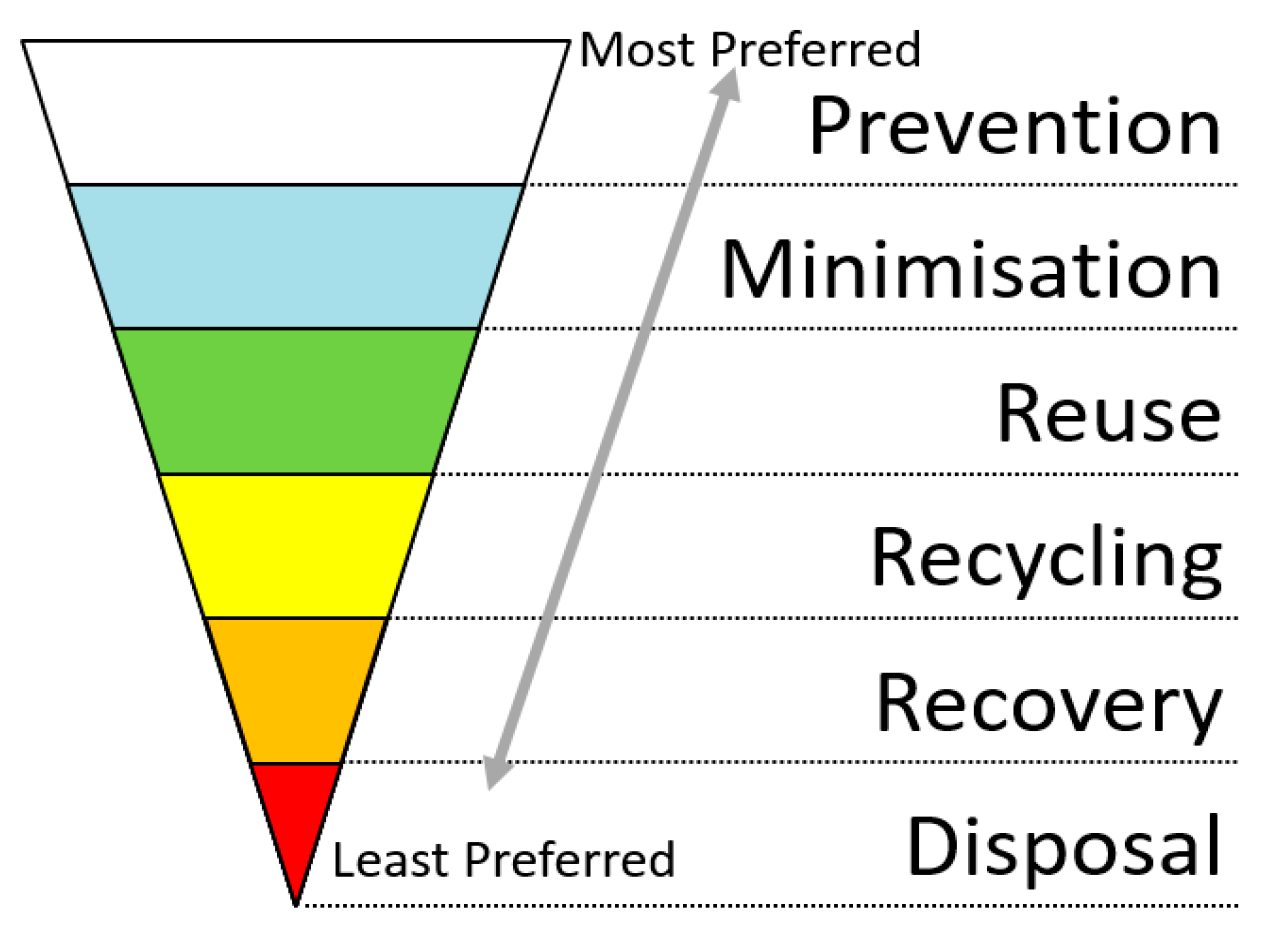
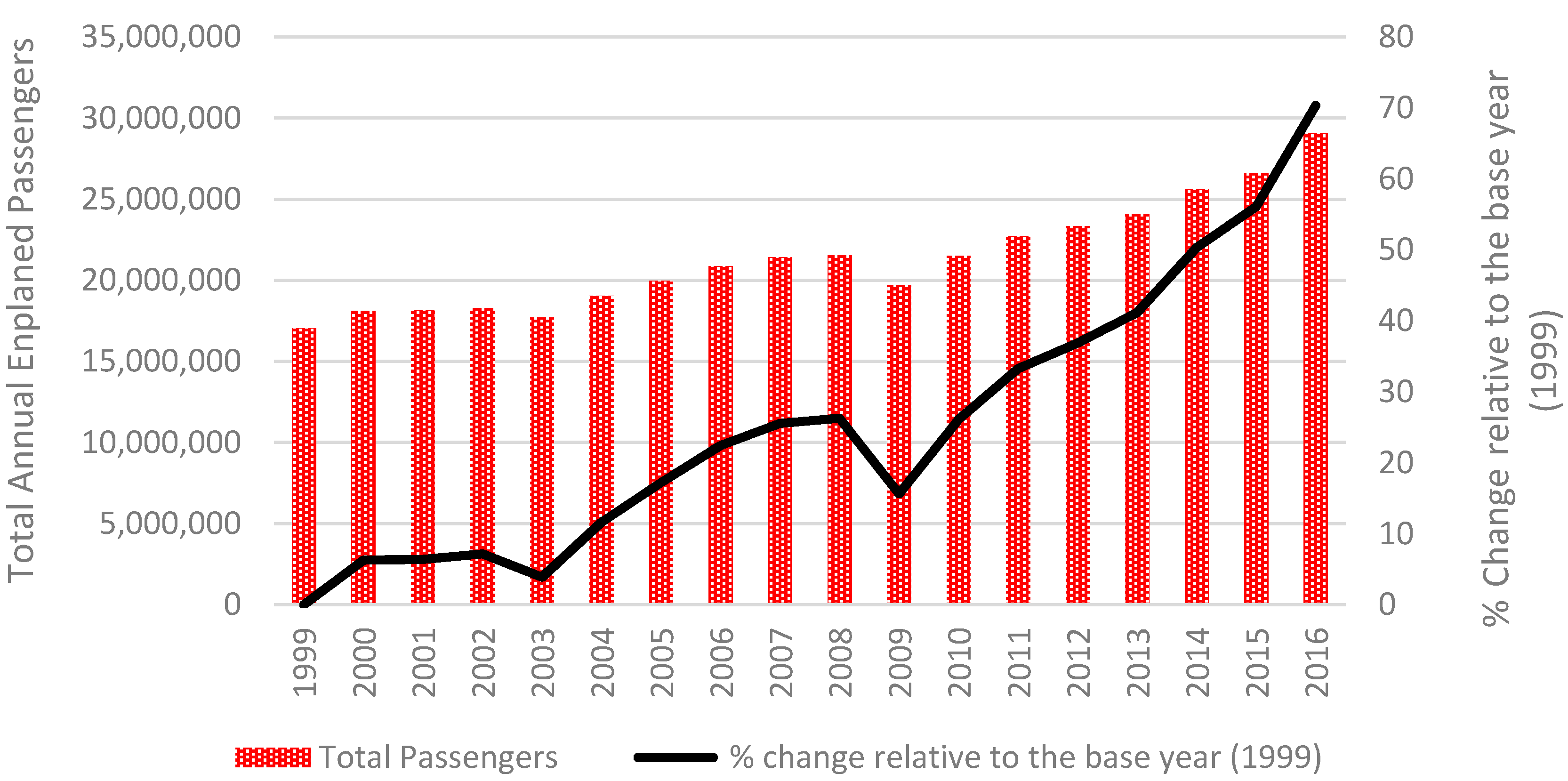
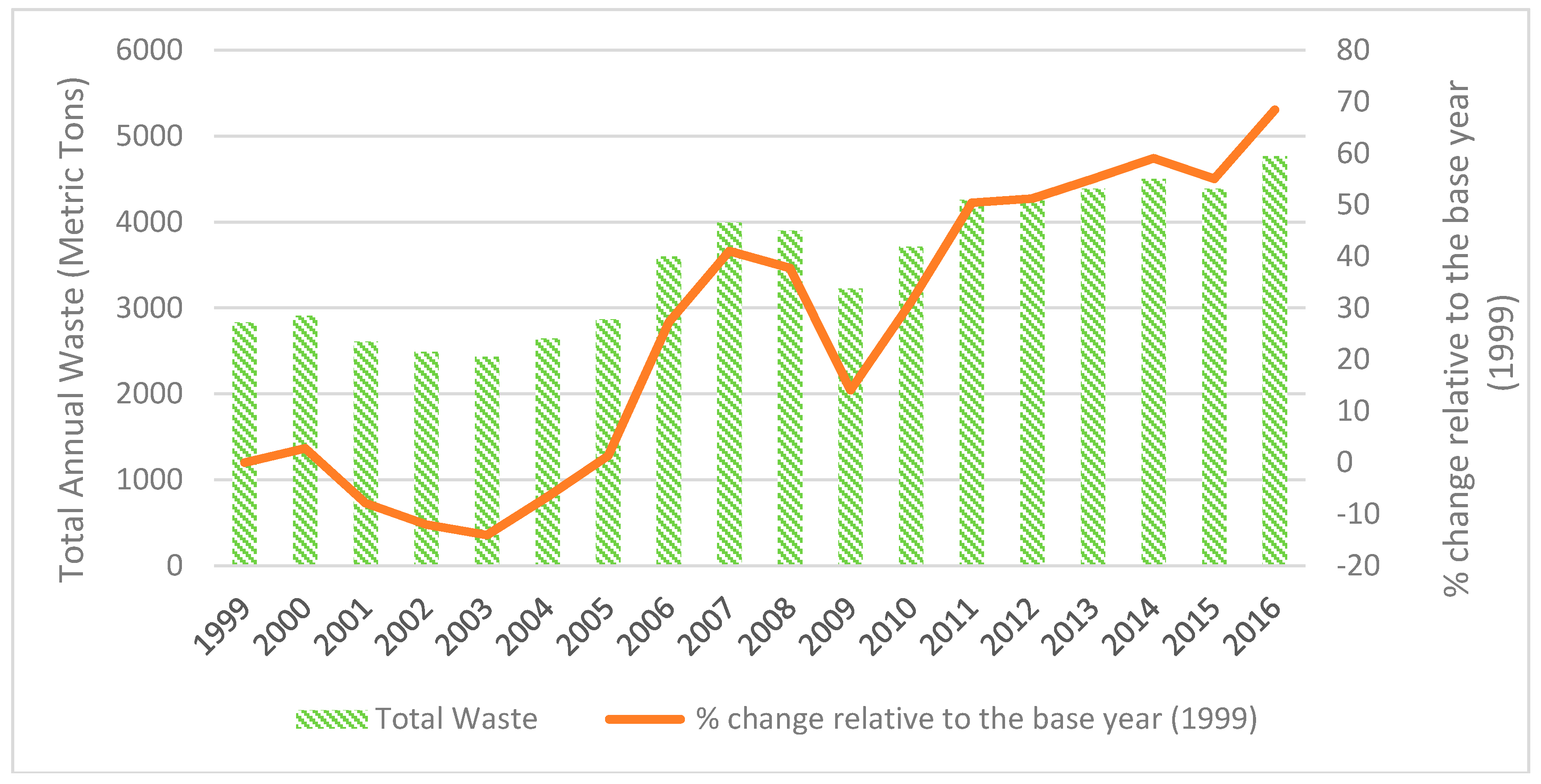
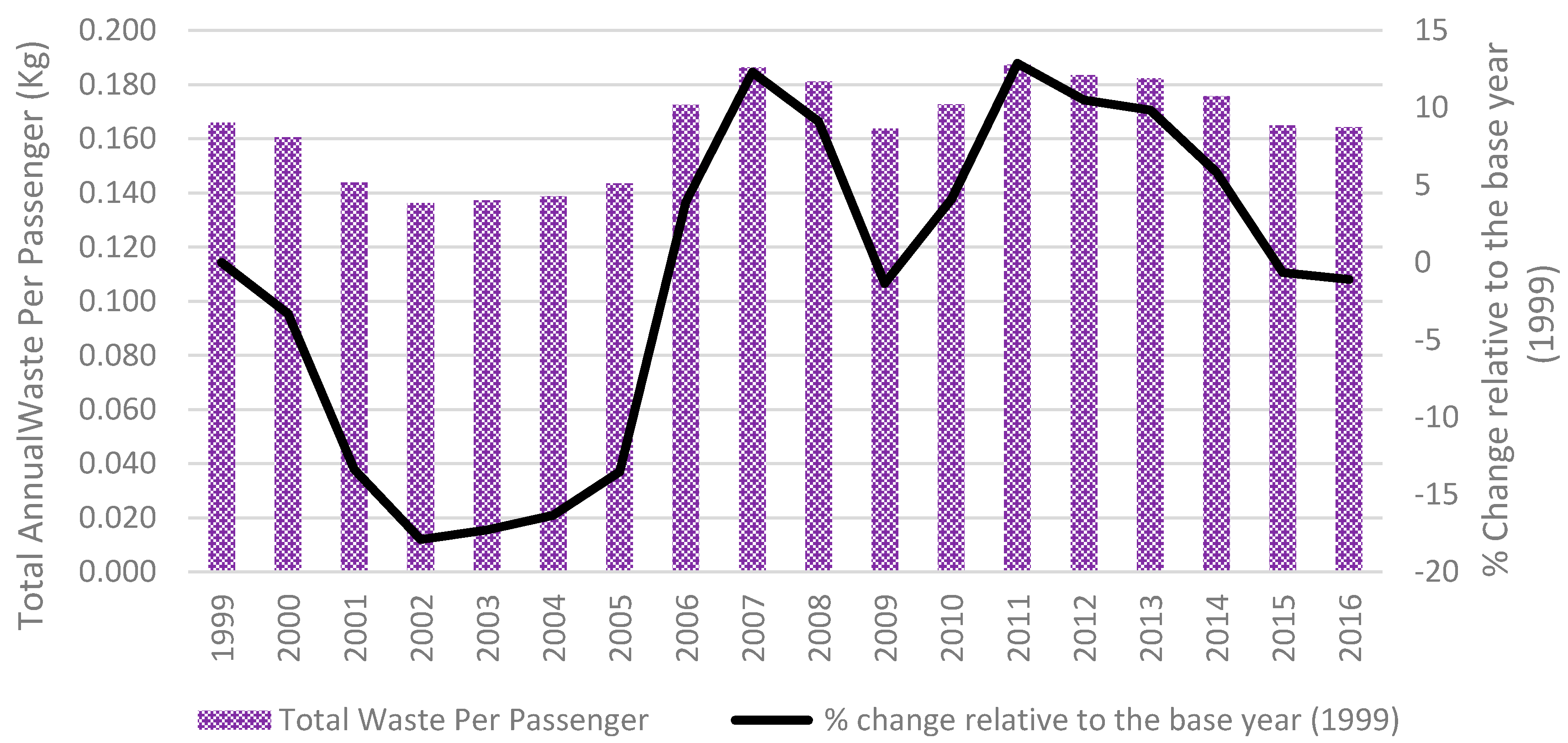
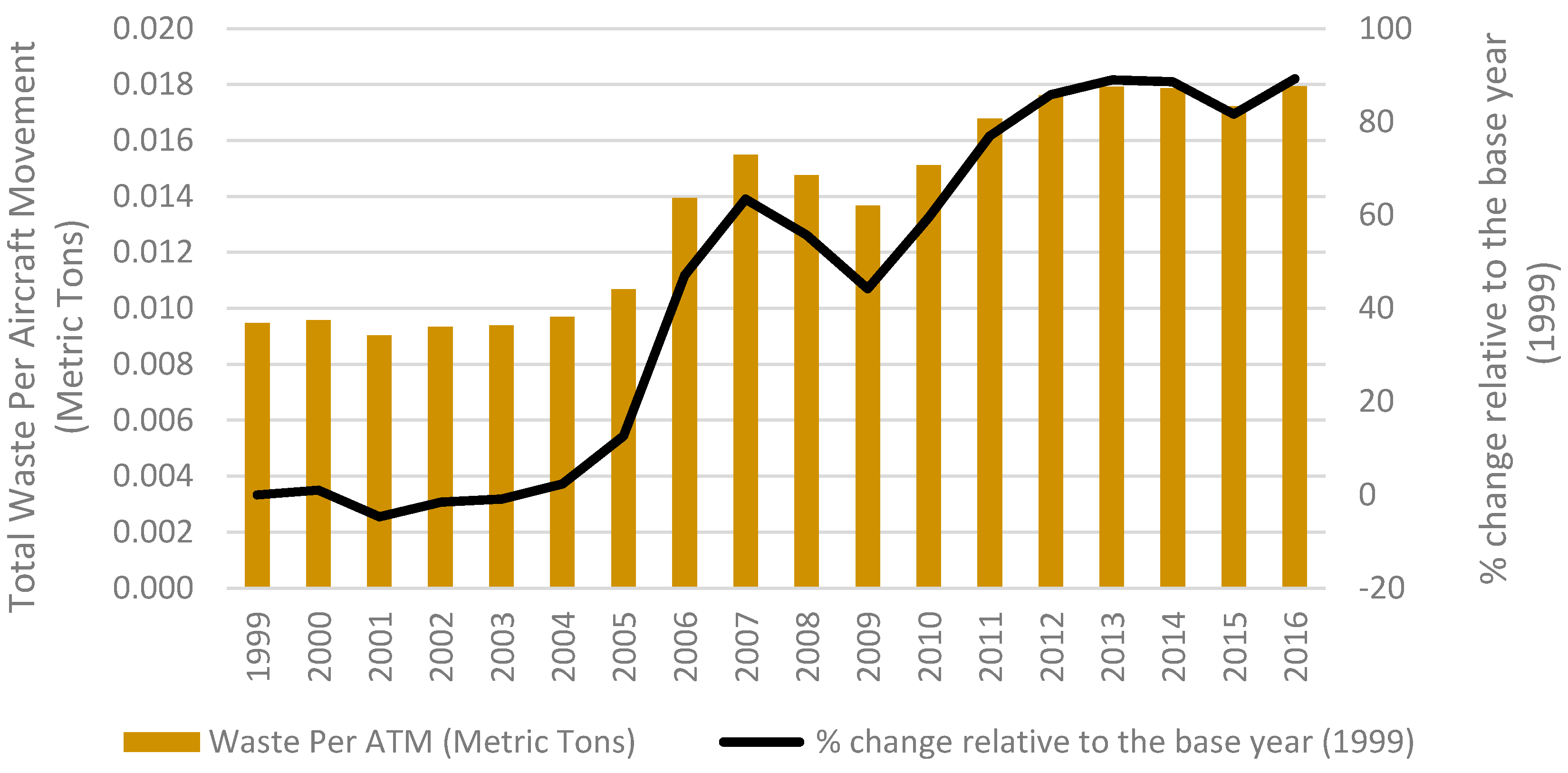
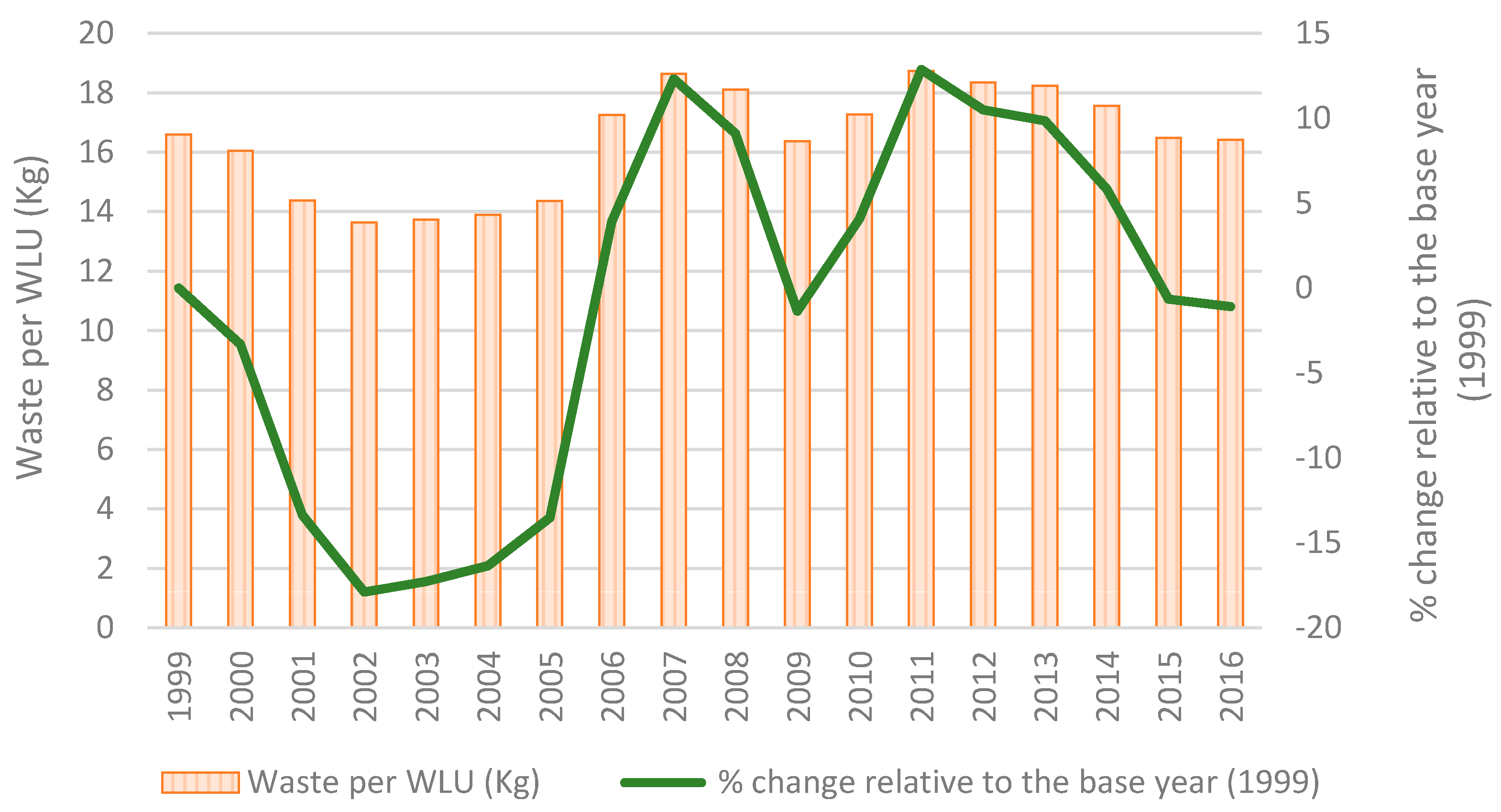
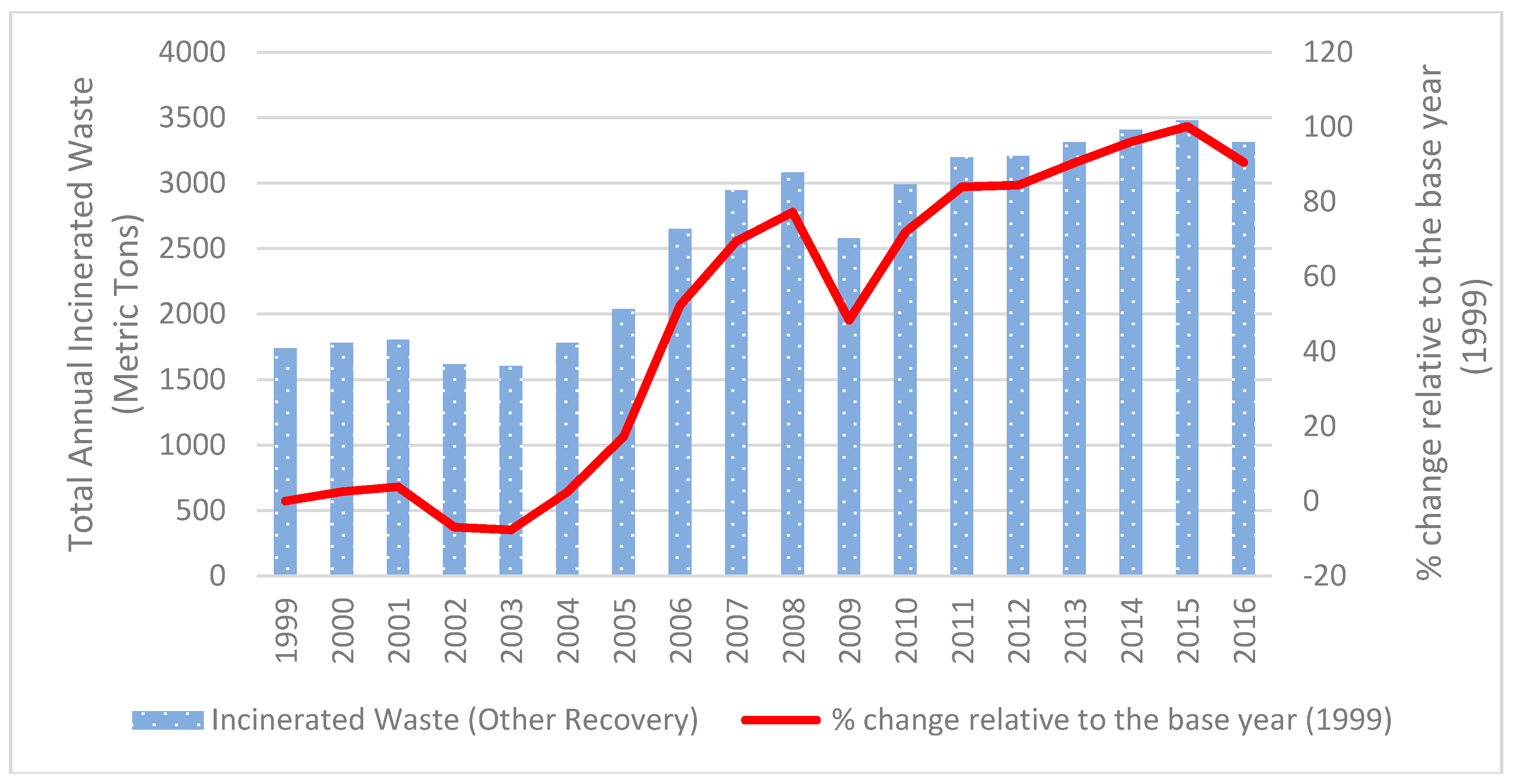
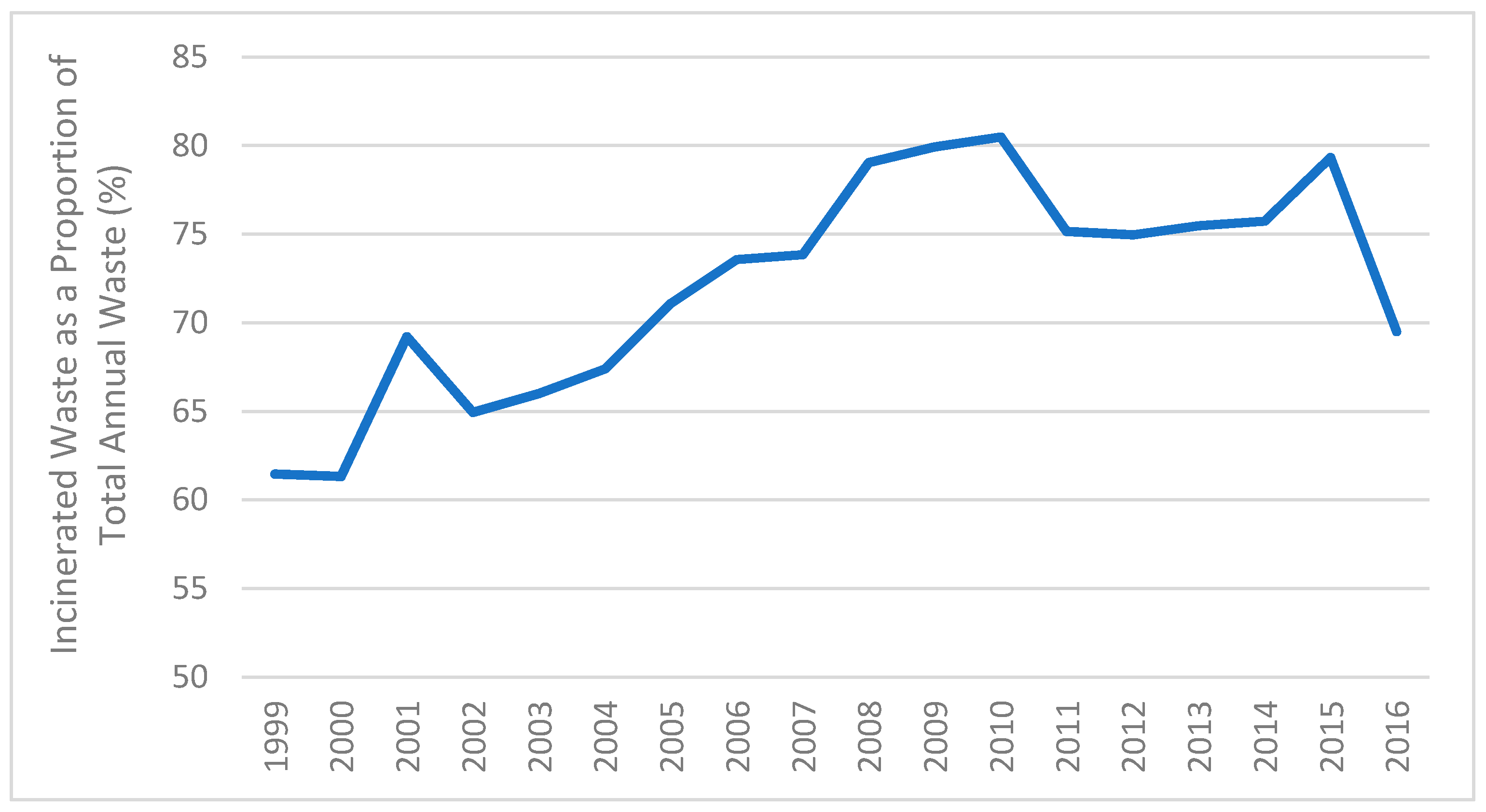

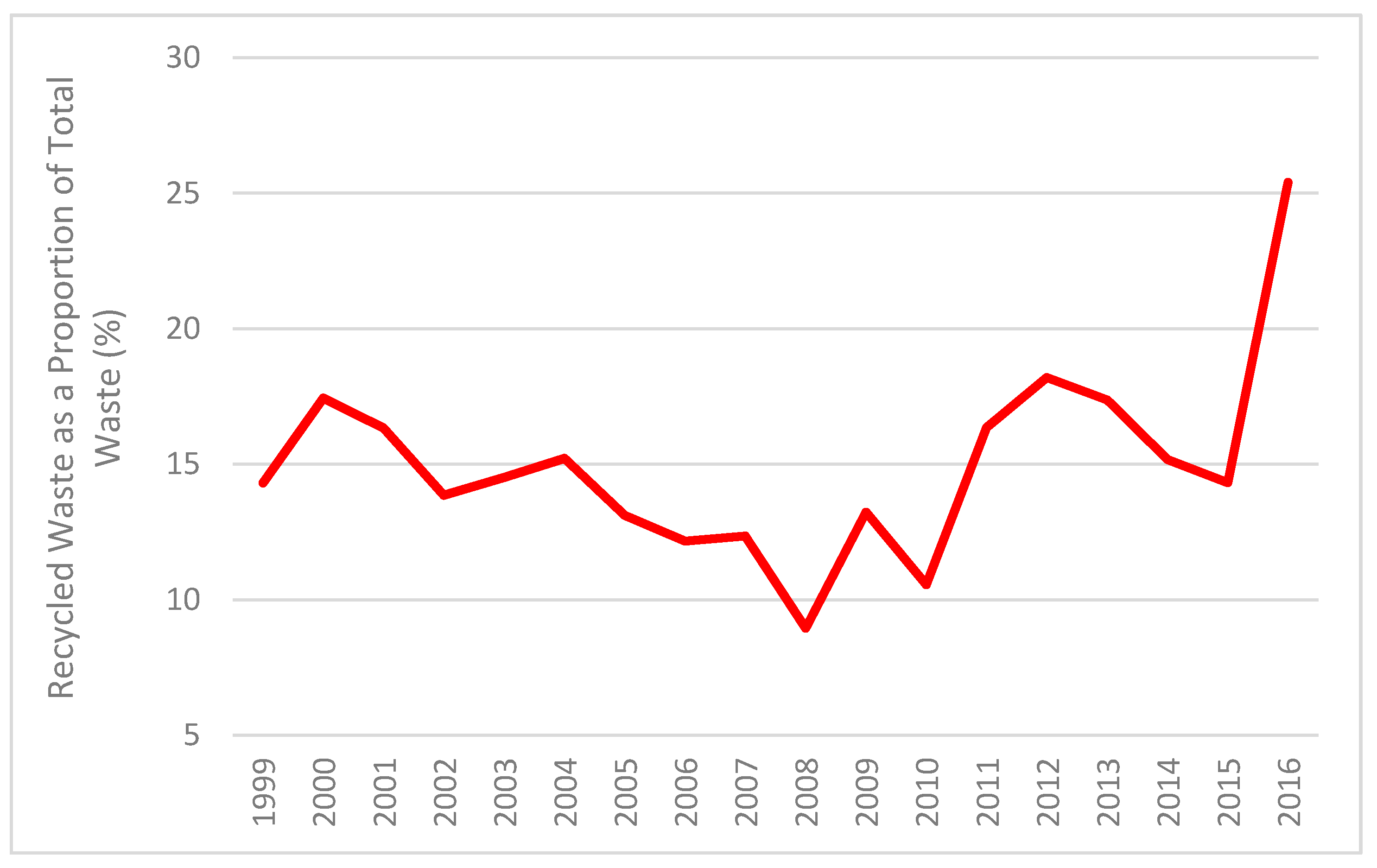
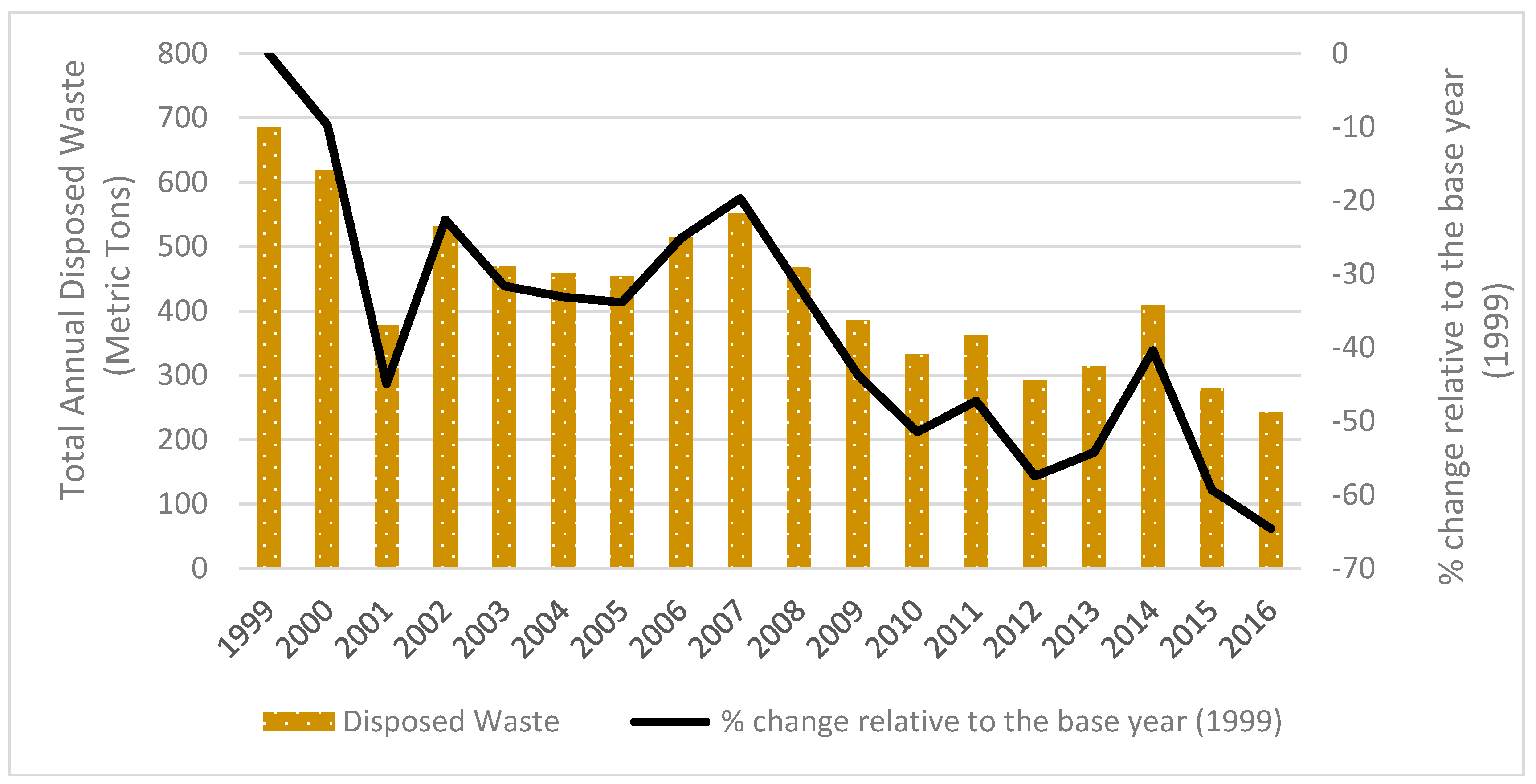
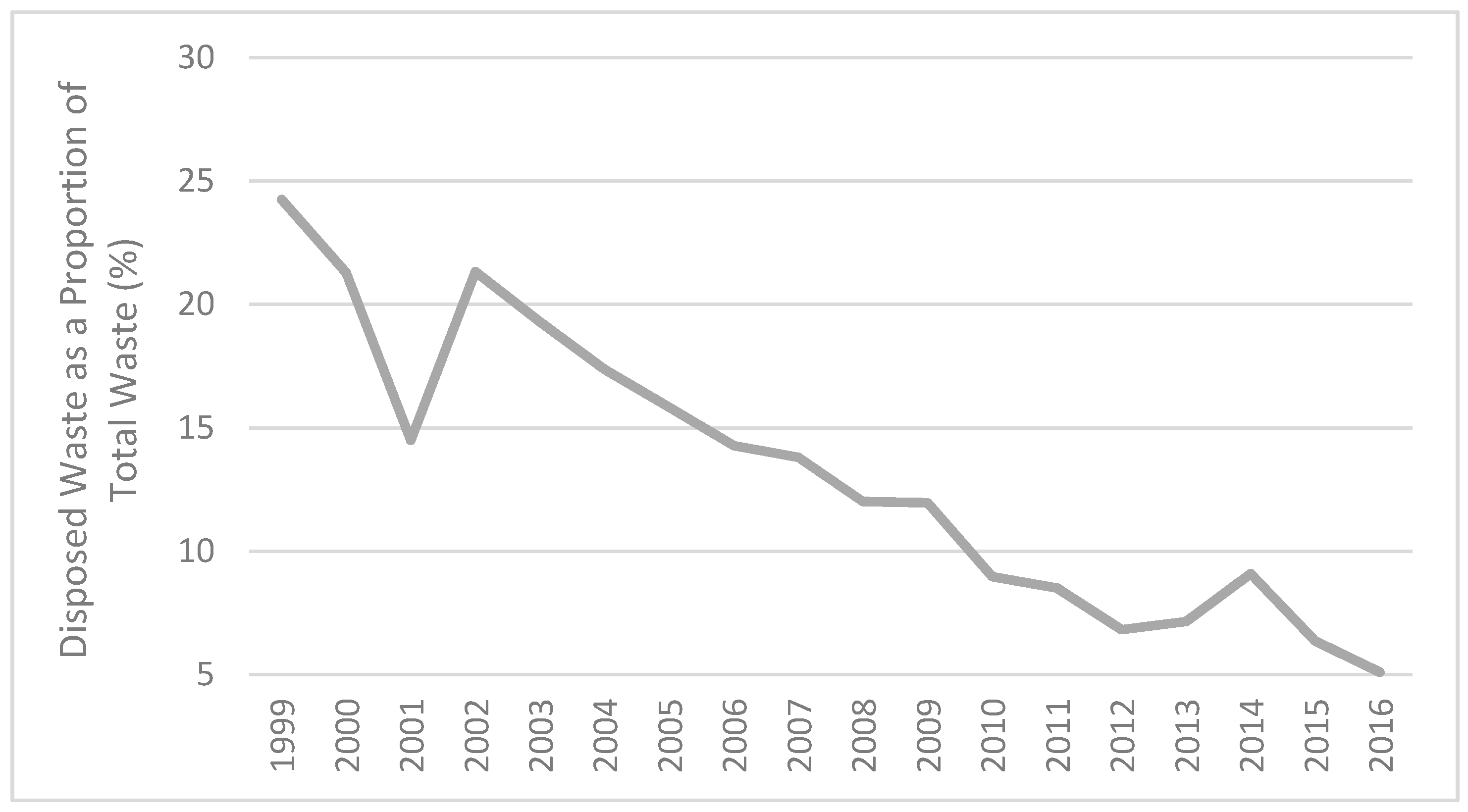
| Airport Stakeholder | Types of Waste Generated |
|---|---|
| Airport Authority | Food, paper, plastic (in many forms), aluminium cans, restaurant and cafeteria grease and oil, electronics. Light bulbs, green waste from lawn cutting and landscaping, general rubbish, airport construction waste: concrete, asphalt, building materials, wood, soil, construction equipment waste, regular rubbish items. |
| Airlines | Food and drink containers, newspapers and magazines, food waste (from lounges/cafeterias), light bulbs, printer toner, paper, documents and computer print outs. |
| Airport Concessionaires and Shops | Food, general rubbish, paper, toner cartridges, batteries, light bulbs, plastic bottles, aluminium cans, packaging. |
| Airport Hotel | Food waste, paper, rags/cloth, light bulbs, napkins, packaging materials, newspapers, green waste from lawn/plant care and landscaping. |
| Car Parks | Food waste, waste paper. |
| Cargo Terminal Operators | Tyres, fluids, lights bulbs, batteries, wood and wooden pallets, plastic wrapping material 1, green waste from lawn/garden care and landscaping, paper, computer printouts. |
| Freight Forwarders | Paper, toner cartridges, batteries, light bulbs, plastic, packaging, aluminium cans and plastic bottles, food and general rubbish. |
| Government Agencies | Paper, toner cartridges, batteries, electronics, plastic bottles, aluminium cans, food, general rubbish. |
| Ground Handling Agent | Paper, toner cartridges, lights bulbs, batteries, plastic, aluminium cans, food and general rubbish. |
| Ground Transport Interchange | Food waste, waste paper, rags/cloth, newspapers, magazines, green waste from lawn care and landscaping. |
| Passengers, Meeters and Greeters | Food, aluminium cans, plastic bottles, packaging, newspapers, magazines. |
| Railway Station | Food waste, rag/cloth, newspapers, magazines, waste paper, plastic bottles, metal drink cans. |
| Rental Car Firms | Paper, computer printouts, toner cartridges, batteries, light bulbs, oils and greases, aluminium cans, general rubbish. |
| Restaurants | Retail and food and beverage waste, cardboard boxes, paper, plastic items, packaging, food packaging, food wrappers, oils and grease, aluminium cans, plastic bottles, plastic and glass containers. |
| Taxi-Cab Holding Bays | Food waste, waste paper, rags/cloth, green waste from lawn care and landscaping. |
| Airport Stakeholder | Types of Waste Generated |
|---|---|
| Airport Authority | Food, paper, plastic (in many forms), aluminium cans, restaurant and cafeteria grease and oil, electronics. Light bulbs, green waste from lawn cutting and landscaping, general rubbish, airport construction waste: concrete, asphalt, building materials, wood, soil, construction equipment waste, regular rubbish items. |
| Aircraft Maintenance Firms | Food, packaging, oils, greases, solvents, packaging, wooden pallets, general rubbish. |
| Airport Concessionaires and Shops | Food, general rubbish, paper, toner cartridges, batteries, light bulbs, plastic bottles, aluminium cans, packaging. |
| Airport Fuel Farm and Suppliers | Paper, toner cartridges, batteries, light bulbs, plastic bottles, aluminium cans, food and general rubbish, oils and grease from vehicles. |
| Air Traffic Control (ATC) | Paper, toner cartridges, computer printouts, light bulbs, batteries, food and general waste, oils and greases from vehicles. |
| Airlines | Food and drink containers, newspapers and magazines, food waste (from lounges/cafeterias), light bulbs, printer toner, paper, documents and computer print outs, oils and greases from ground service equipment and vehicles. |
| Cargo Terminal Operators | Tyres, fluids, lights bulbs, batteries, wood and wooden pallets, plastic wrapping material, green waste from lawn/garden care and landscaping, paper, computer printouts. |
| Fixed Base Operator (FBO) | Paper, toner cartridges, lights bulbs, batteries, plastic, aluminium cans, food and general rubbish, oils and greases from ground handling equipment. |
| Flight Catering Centres and Kitchens | Food and beverage waste, cardboard boxes, paper, plastic items, packaging, food packaging, food wrappers, oils and grease, aluminium cans, plastic bottles, plastic and glass containers. |
| General Aviation/Business Jet Centre | Paper, toner cartridges, batteries, electronics, plastic bottles, aluminium cans, food, general rubbish, oils and grease from equipment maintenance. |
| Government Agencies | Paper, toner cartridges, batteries, electronics, plastic bottles, aluminium cans, food, general rubbish. |
| Ground Equipment Maintenance Firms | Paper, toner cartridges, light bulbs, plastic bottles and aluminium cans, packaging, wooden pallets, oils and greases. |
| Ground Handling Agent | Paper, toner cartridges, lights bulbs, batteries, plastic, aluminium cans, food and general rubbish, oils and greases from ground handling equipment. |
| Ground Transport Interchange | Food waste, waste paper, rags/cloth, newspapers, magazines, green waste from lawn care and landscaping. |
| Passengers | Food, aluminium cans, plastic bottles, packaging, newspapers, magazines. |
| Restaurants | Retail and food and beverage waste, cardboard boxes, paper, plastic items, packaging, food packaging, food wrappers, oils and grease, aluminium cans, plastic bottles, plastic and glass containers. |
© 2018 by the authors. Licensee MDPI, Basel, Switzerland. This article is an open access article distributed under the terms and conditions of the Creative Commons Attribution (CC BY) license (http://creativecommons.org/licenses/by/4.0/).
Share and Cite
Baxter, G.; Srisaeng, P.; Wild, G. An Assessment of Airport Sustainability, Part 1—Waste Management at Copenhagen Airport. Resources 2018, 7, 21. https://doi.org/10.3390/resources7010021
Baxter G, Srisaeng P, Wild G. An Assessment of Airport Sustainability, Part 1—Waste Management at Copenhagen Airport. Resources. 2018; 7(1):21. https://doi.org/10.3390/resources7010021
Chicago/Turabian StyleBaxter, Glenn, Panarat Srisaeng, and Graham Wild. 2018. "An Assessment of Airport Sustainability, Part 1—Waste Management at Copenhagen Airport" Resources 7, no. 1: 21. https://doi.org/10.3390/resources7010021




